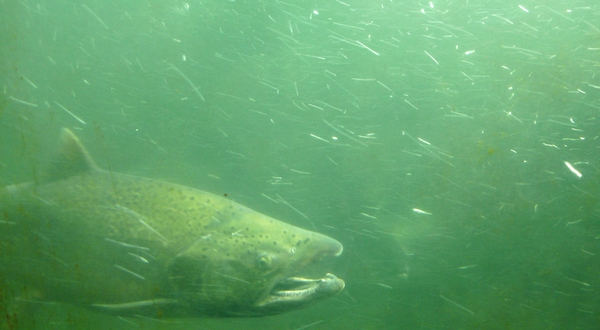
Federal Judge Faults NMFS’s SE AK Biop Hatchery Mitigation
A US District Court judge has found that the National Marine Fisheries Service screwed up when it authorized a Southeast Alaska salmon fishing plan that leaned on unclear hatchery production increases at that time to mitigate the take of Chinook that almost entirely return to Washington, Oregon and elsewhere and provide forage for ESA-listed southern resident killer whales.

The decision from Judge Richard A. Jones in Seattle was hailed as a “bombshell” by the Wild Fish Conservancy for “calling into question decades of unsustainable Chinook harvest management in Southeast Alaska and marks a watershed moment for the recovery of Southern Resident orcas and wild Chinook,” though the court essentially adopted a recommendation from Magistrate Judge Michelle L. Peterson that had been issued early last fall.
And since NMFS issued that 2019 biological opinion that the commercial troll fishery off the Alaskan Panhandle wouldn’t jeopardize the southern residents, Congress and Washington’s legislature have actually come through with millions of dollars to produce more hatchery salmon, including at least 25 million extra smolts in the hopper in October 2020 when WDFW and other state agencies updated Governor Inslee on what was being done to help the SRKWs.
The expectation is that the feds’ and state’s Orca Prey Initiative will produce a 4 to 5 percent increase in the number of Chinook available for the whales to forage on in Puget Sound in summer and offshore in winter, providing “shirttail benefits” for fishermen along the way.
Specific increases are detailed here and here.
Judge Jones ruling also sheds a different light on WFC’s surprising full-court press last Friday morning when 10 of the Duvall outfit’s staffers, lawyers and others urged the Washington Fish and Wildlife Commission to forego WDFW’s pending request to the state legislature to continue boosting Chinook releases.
While Commissioner Lorna Smith seemed somewhat swayed by WFC et al’s arguments, the citizen panel ultimately approved the package that would include some $98 million for the hatchery system, including to produce 2.6 million more salmon on the Sol Duc, Duwamish-Green and Samish in the 2023-25 budget biennium, if approved next year by lawmakers.
The thing is, WFC essentially wants to shut down all hatcheries and most fisheries in the wrong-headed belief that that will somehow recover the Chinook-eating marine mammals, even as decades of decreased salmon production and sharply reduced salmon fisheries have been accompanied by parallel declines in J, K and L pods. True, salmon habitat work is ongoing but it will likely take decades to yield increased salmon runs, time the SRKWs may not have, given their highly selective dietary preferences.
WFC is also suing WDFW over the state’s salmon production increase, claiming it should have come under a State Environmental Policy Act review.
Meanwhile, Judge Jones’s decision on the 2019 SE AK biop left fellow defendants in Alaska fuming.
“Alaska should not be expected to be solely responsible for remedy,” said Alaska Department of Fish and Game Commissioner Doug Vincent-Lang. “What is good for the goose is good for the gander. If this decision sticks, we will be looking at having all fisheries that affect these salmon being treated equally under the law.”
The Alaska Trollers Association called it a “bad outcome.”
More coverage can be found at Courthouse News.
Next up is for NMFS and the state of Alaska to tell Judge Peterson how they plan to deal with this week’s ruling, per The Seattle Times.
NMFS spokesman Michael Milstein in Portland this morning said his agency had no comment given the ongoing litigation.
Earlier this summer the feds won a separate court case against Fish Northwest over its biop authorizing 2021 Puget Sound salmon seasons.
